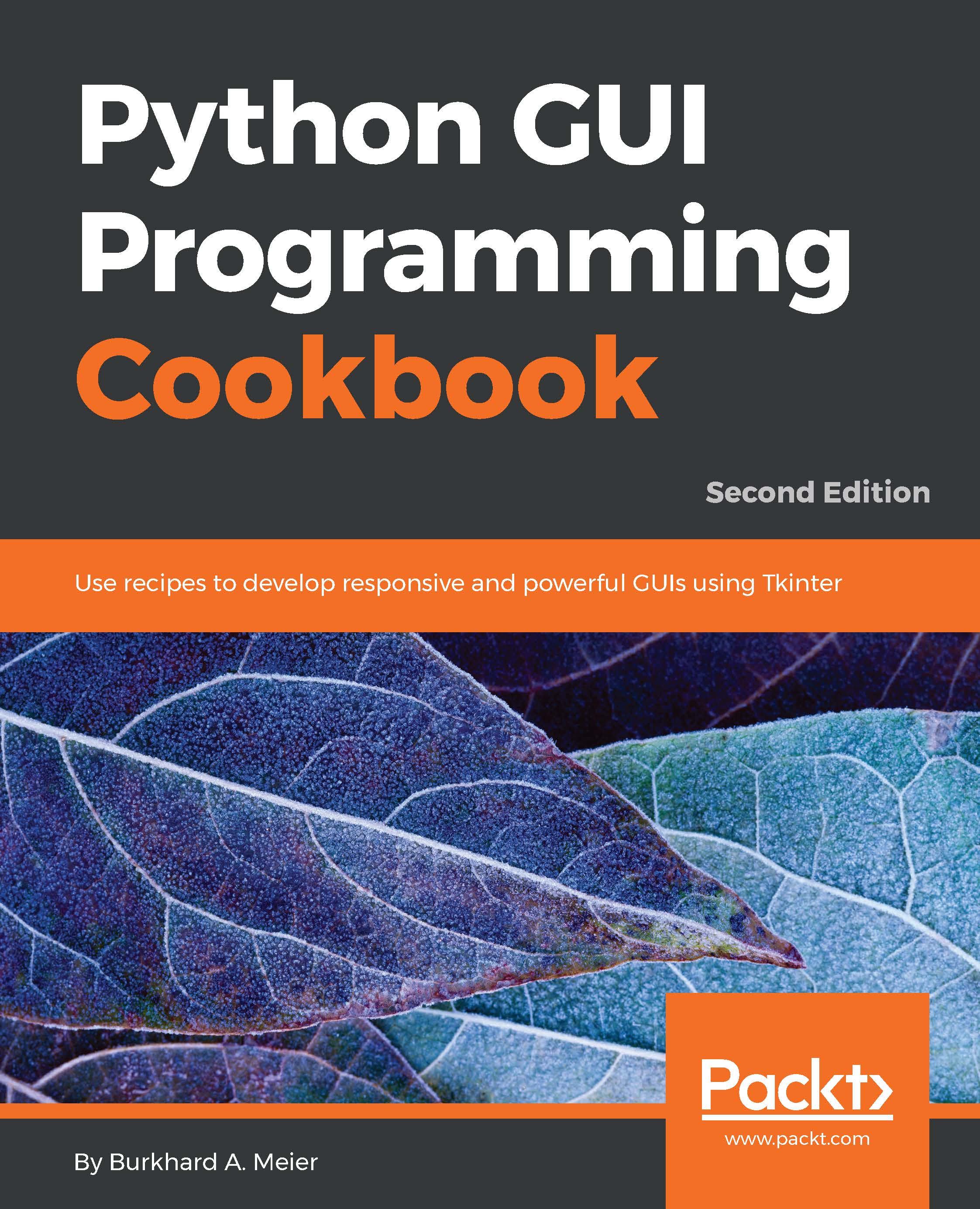-
Book Overview & Buying

-
Table Of Contents

Python GUI Programming Cookbook, Second Edition - Second Edition
By :

Python GUI Programming Cookbook, Second Edition
By:
Overview of this book
Python is a multi-domain, interpreted programming language. It is a widely used general-purpose, high-level programming language. It is often used as a scripting language because of its forgiving syntax and compatibility with a wide variety of different eco-systems. Python GUI Programming Cookbook follows a task-based approach to help you create beautiful and very effective GUIs with the least amount of code necessary.
This book will guide you through the very basics of creating a fully functional GUI in Python with only a few lines of code. Each and every recipe adds more widgets to the GUIs we are creating. While the cookbook recipes all stand on their own, there is a common theme running through all of them. As our GUIs keep expanding, using more and more widgets, we start to talk to networks, databases, and graphical libraries that greatly enhance our GUI’s functionality. This book is what you need to expand your knowledge on the subject of GUIs, and make sure you’re not missing out in the long run.
Table of Contents (12 chapters)
Preface
 Free Chapter
Free Chapter
Creating the GUI Form and Adding Widgets
Layout Management
Look and Feel Customization
Data and Classes
Matplotlib Charts
Threads and Networking
Storing Data in our MySQL Database via our GUI
Internationalization and Testing
Extending Our GUI with the wxPython Library
Creating Amazing 3D GUIs with PyOpenGL and PyGLet


